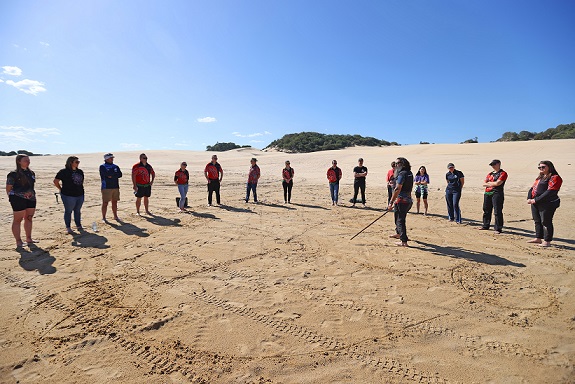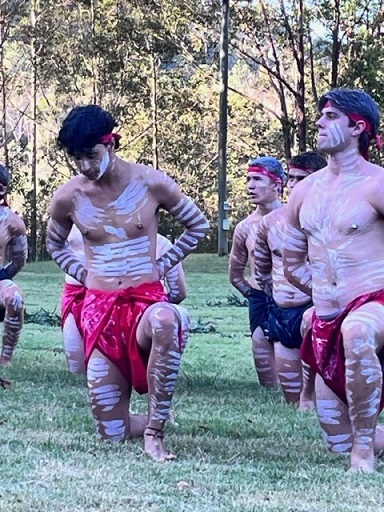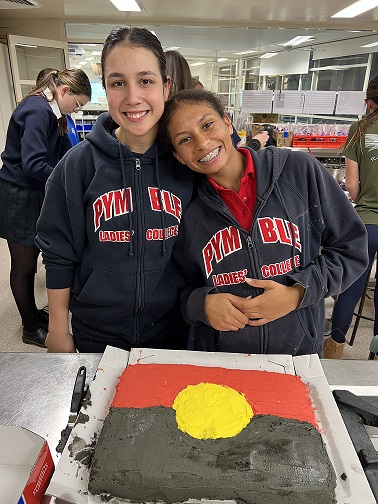
In 2008, the Federal Government launched the ‘Closing the Gap’ framework, an ambitious initiative to achieve equality for Indigenous Australians in health, education, and employment by 2031.
However, despite 15 years of concerted efforts within Australia’s states and territories, there has been limited progress in achieving these goals.
In recent years, a growing number of schools have been striving to address this by introducing targeted programs that help young Indigenous Australians in a myriad of important ways, whether it’s through mental health programs, initiatives aimed at providing reliable career pathways, or increasing cultural awareness within communities across Australia.
During NAIDOC Week in July, an initiative by the NSW Department of Education saw staff from more than 2,200 schools across the state undertake cultural awareness training at the start of Term 1, with some organising this professional learning to be held On Country with an Elder or Elders.
Since 2016, an expanding group of NSW Independent schools has also been ramping up efforts to ensure Aboriginal and Torres Strait Islander students are provided with a culturally informed education that is inclusive, empowering and engaging.

It started with a pilot program at four schools with above average enrolments of First Nations students.
An initiative of the Association of Independent Schools of NSW (AISNSW), the pilot program developed strategies to improve the students’ literacy, numeracy and other academic outcomes.
AISNSW Chief Executive Margery Evans said the initial results were positive and the pilot was soon expanded to 12 schools.
“Then it grew into a fully-fledged program in 2019 called The Waratah Project. with 25 schools on board,” Evans told The Educator.
“Today, 35 day and boarding schools from across the Independent sector are involved including the original four schools - Kempsey Adventist College, St Joseph’s College at Hunter’s Hill, Pymble Ladies College and St Ignatius College, Riverview at Lane Cove.”
Evans said what was crucial to lifting academic outcomes were initiatives to support student wellbeing and strengthen relationships with students’ families and their communities.
“Before the project started, school staff visited students’ home school, family, and community to increase their awareness and understanding of individual students - their needs, culture and prior learning,” she said.
“Schools were then more able to directly personalise each student’s academic development while also building strong relationships with their family and community, providing culturally sensitive personal, spiritual, social and physical support.”

The Waratah Project was conceived by Wingara, AISNSW’s Aboriginal and Torres Strait Islander Education team.
Associate Chief Executive Douglas Melrose-Rae, who oversees Wingara, said seven schools act as a ‘hub’, each supporting four other schools.
“Together, these 35 schools impact more than 30,000 students, including 1,338 Aboriginal and Torres Strait Islander students.”
Appraisals of The Waratah Project have been strongly encouraging.
An early evaluation by the Jumbunna Institute for Indigenous Education and Research at the University of Technology Sydney found that its activities delivered significant improvements, raising literacy levels (particularly reading), academic results and class rankings of First Nations students.
A second evaluation by First Nations consultancy Murawin in 2022 concluded that The Waratah Project had resulted in a noticeable difference in the cultural competency across both a whole school environment and the wider community.
“Not only did Aboriginal and Torres Strait Islander students improve their educational, sociocultural and wellbeing outcomes, relationships between students, staff and visiting families were culturally informed and became stronger,” Melrose-Rae said.
The Principal of St Ignatius College Riverview, Paul Hine, said First Nations students at his school recorded strong gains in language, literacy and numeracy using a combination of elements including the Macquarie Literacy Program (MacqLit), specific numeracy supports and close collaboration with speech and language therapists.
“Some of the MacqLit scores that we’ve got through this program, we’ve never seen before, nor in such a short space of time,” Dr Hine said.
“In a sense, the literacy and numeracy [gains are] a manifestation of that other kind of understanding of those deeper needs.”
And this year, the head of Scots College’s Indigenous Education Program, Justine Kolliou, received a prestigious international prize (the IBSC Action Research Award) for her research into The Waratah Project’s school-based strategies and their impact of on students’ cultural and emotional wellbeing while boarding off-Country in Sydney.
She identified that by engaging local Aboriginal mentors, students were provided with an ongoing connection with culture, identity and created a place of belonging while attending school away from home.
Melrose-Rae said boarding schools have a unique opportunity to provide learning support.
“This is often done less conspicuously through homework or prep sessions after school where students can access both the Aboriginal support worker and specialist staff as needed.”
The 27 First Nations staff involved are an essential part of the project’s success, he said.
“They play key roles in providing advice and understanding, as well as additional support through in-class, withdrawal and after-class assistance and tutoring,” Melrose-Rae said.
“At its core, The Waratah Project succeeds because schools personalise their support for students, have a deeper understanding of their culture and set high expectations, which the students respond well to.”


